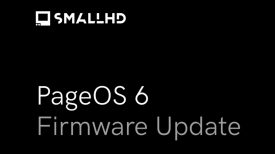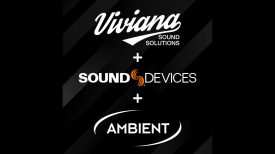PowerVision is probably not a name your very familiar with but that hasn’t stopped them pitching their brand new drone squarely at the professional cinematography market. The Chinese manufacturer have just opened pre-orders for their PowerEye drone which features an interchangeable lens Micro 4/3 camera. It has afold up design a bit like the new DJI Magic and GoPro Karma, but a lot larger, heavier.
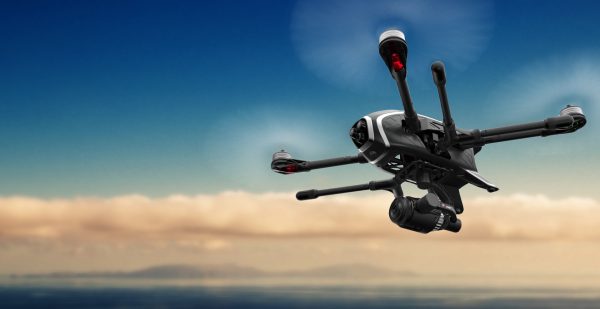
The PowerEye Professional is equipped with what the company claims is a high-performance 4K UHD camera. The camera uses a 4/3″ CMOS sensor (4,640 x 3,480) and can capture video in 4K: 4,096 x 2,160 @24p; UHD: 3,840 x 2,160 @24 fps / 25 fps / 30fps. There are no specifications listed for HD or high frame rate capture. The maximum recording bitrate is 60 Mbps and the ISO range can be changed from 100 – 3,200 (video) and 100 – 1,600 (photo). Recordings can be made in FAT32/exFAT, JPEG, DNG, MP4, and MOV (MPEG-4 AVC/H.264) formats. Overall this sounds similar to the specification of the DJI X5 camera for the Inspire1, but of course specifications aren’t everything and the resulting image is what matters. It will be interesting to see just how the pictures from the PowerEye compare to those from the DJI X5.
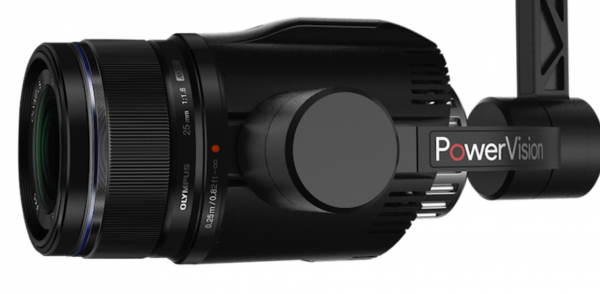
The PowerEye can be used with either the included 14mm lens or a variety of additional lens options, including an option for a variable focus 14 – 42mm lens, that allows for in-air zooming. The PowerEye uses a integrated 3-axis gimbal with a rotational equilibrium system. To compensate for different lenses there is a small adjustable weight that is built into the back of the camera housing – a nice alternative to sticking small coins or the like on with tape that you sometimes need to do to balance slightly larger lenses on competing gimbals.
The drone weighs in at 3.95kg (8.7 lb) (Battery and propellers included), and a physical size of 340 mm x 285 mm x 296 mm (folded) / 513 mm x 513 mm x 310 mm (flight).
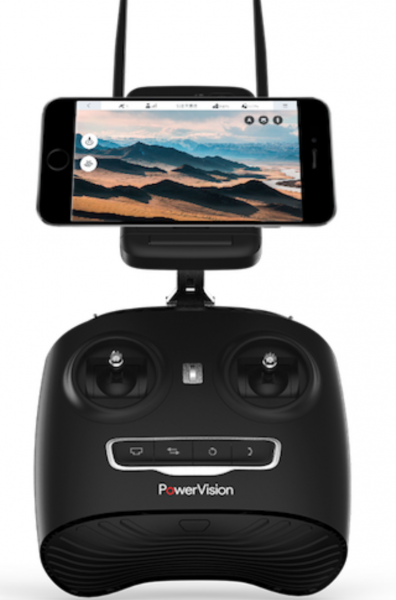
PowerEye features integrated Dual Viewing capability that gives multiple users the ability to see video simultaneously from a First Person View (FPV) and a Subject Matter View (SMV). With Dual Viewing a cinematographer has the ability to see what is in front of the PowerEye while in flight through a dedicated FPV camera housed in the nose of the aircraft and a separate gimbal-mounted camera can be simultaneously directed to action on the ground or other areas in the sky. Dual Viewing can be managed by a single person using one mobile device in either a split screen or picture-in-picture mode (user selectable) using the PowerEye App. Two people can also manage the Dual View using two mobile devices with one managing FPV, and the other managing SMV.
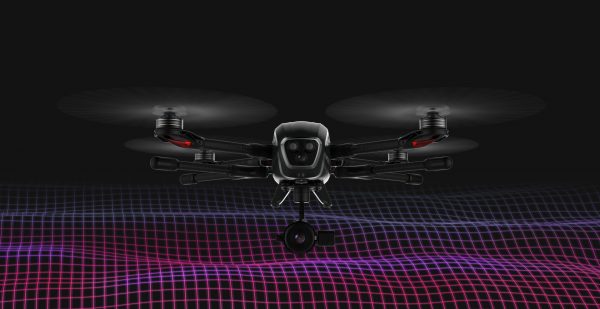
The PowerEye has a maximum flight time of over twenty-nine minutes, which is nearly 40% more than some of the competition. PowerEye uses an object detection system on the front of the aircraft to prevent the drone from coming in contact with any objects. Just how well this system works in comparison to those available from DJI will also be interesting to test. An optical positioning and sonar system allows the PowerEye to be used for indoor flight.
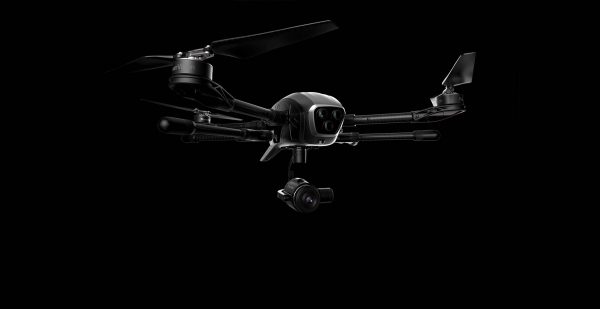
The PowerEye control can provide a real-time HD video stream up to claimed 3.1 miles (5 kilometers) and has a flight ceiling of 4,000 m (13,123 ft). The maximum velocity of the drone is 64.8kph (professional mode).
There are PowerModes that let the drone execute complicated flight tasks while you focus on camera work. These are clearly some kind of automation, but it is unclear exactly how the PowerModes work.
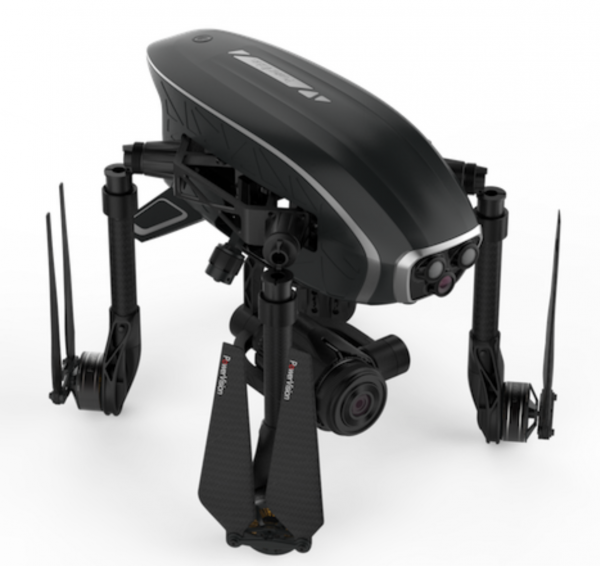
PowerEye has been designed to be collapsible allowing it to be folded up for transporting. While in the air the landing gear rises up, allowing the camera to have a clear field of vision. Once on the ground the landing gear can be is detached and the rotor arms can also be folded down for easier storage.
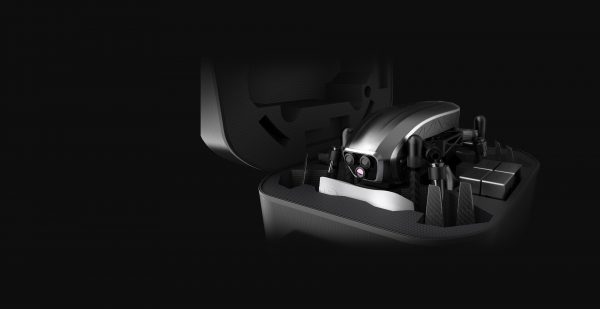
PowerEye is available in two camera models- the PowerEye Professional and the PowerEye Thermal. The Thermal version has a state-of-the-art Thermal/Natural Light Switchable Camera than comes with two integrated light sensors and two lenses. This may be useful for wildlife filmmakers in particular. Through the PowerEye App, users can switch between the thermal and the natural light setting with one touch. Using the Thermal/Natural Light Switchable Camera cinematographers can capture a spectrum of light not visible to the unaided eye.
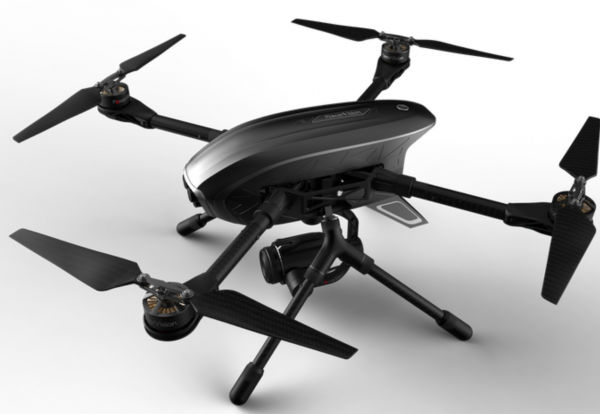
The PowerEye Professional is priced at $3,988.00 USD and includes the PowerEye aircraft with a full set of propellers, camera lens (Panasonic Lumix G 14mm F2.5 ASPH), rolling carrying case, one remote control, one extra pair of propellers, base station, battery, and battery charger. The PowerEye Professional can be pre-ordered through the PowerVision Online Store and is expected to start shipping in December this year.
Features:
· PowerVision Object Detection Technology: Uses an array of integrated sensors to detect flight path obstacles and sound an alert within 10 meters
· Stable 4-Point Landing/Lift-off Design: Eliminates the need for dangerous hand-held take-offs and catch-landings common with 2-point and/or T-bar designed drones
· Highly Portable 600mm Class Aircraft: Integrates collapsible legs and rotors for quick and easy transport, folding to a mere 340 x 285 x 296 mm
· Micro Four Thirds (MFT) System Compatibility: Enables users to connect a variety of lenses based on their personal preferences
· Maximum Flight Time: Up to 29.5 minutes
· Control Range and Real-Time High Definition Video Stream: Up to 3.1 miles (5 kilometers)
· Lightweight:
o Weight 8.7 lb (3,950 g) with battery and propellers included
o Maximum PowerEye payload – 6.6 lbs



